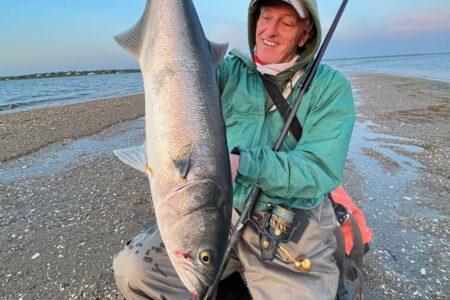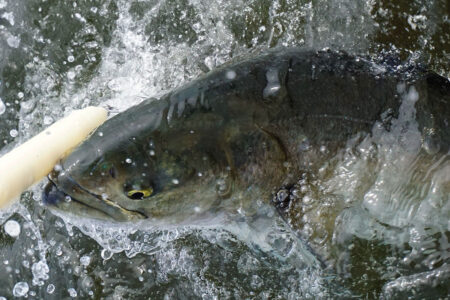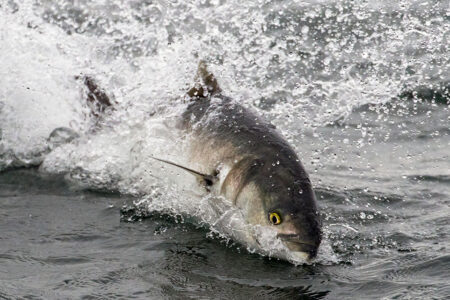Simple yet effective upgrades to a tried and true classic.
Ponytails are an effective favorite amongst fishermen targeting bluefish. They’re simple, easy to troll, and only have one hook, which makes unhooking the fish a breeze. However, after a few fish, the wire that attaches the hook will bend or kink, and the hook will show wear and not be as strong as it once was. When the wire kinks, this causes the hook to be out-of-line with the rest of the lure and could lead to missed fish. The only way to correct this is by a trial and error process of straightening the wire and then checking it. Upgrading wire and hook will eliminate the need for that process and ensure that the lure can continually put fish on deck for seasons to come.
SUPPLIES
- Ponytail
- 175-pound cable and two appropriate crimps
- 3X 6/0 stainless hook
- 1-inch of 1/4-inch heat shrink
- Dykes (or something to cut the cable and wire)
- Crimpers
- Heat gun or small torch
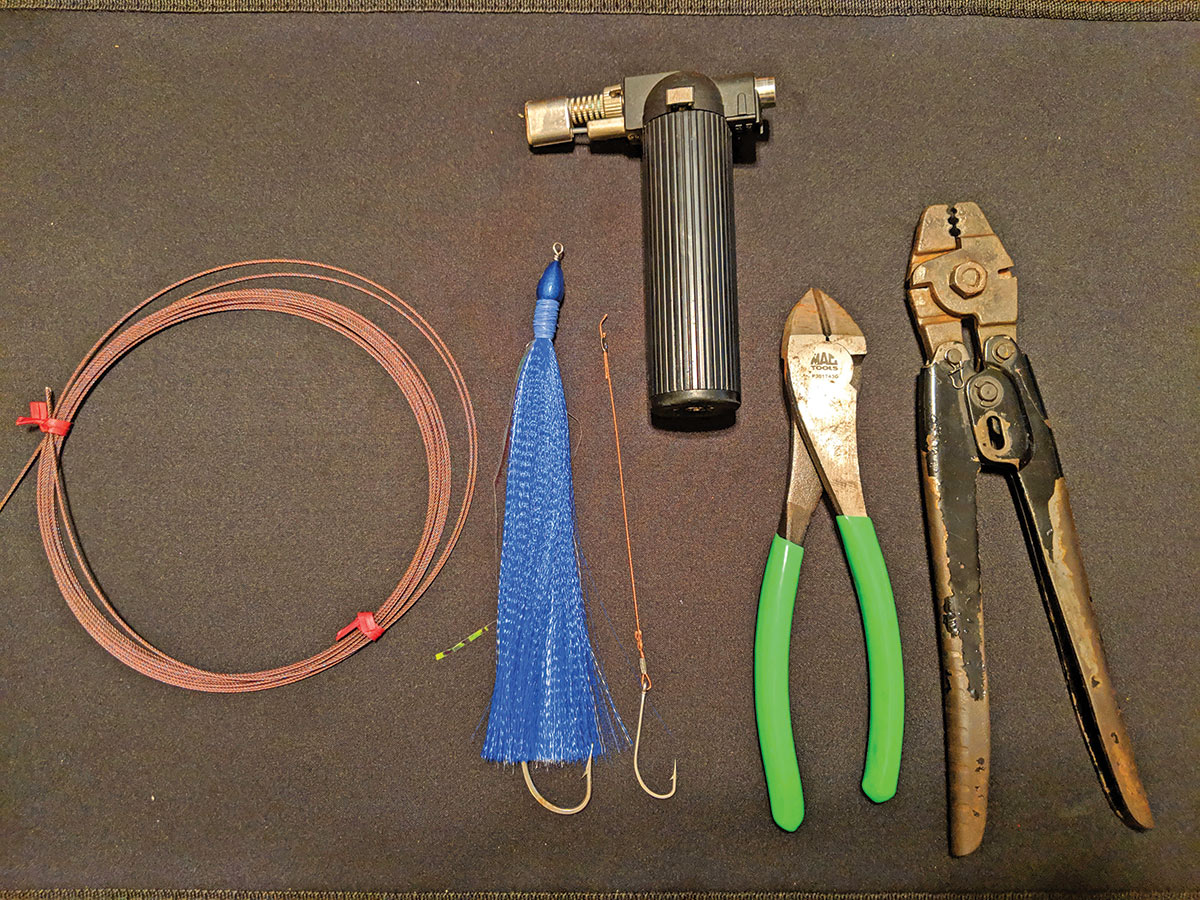
Generally, ponytails come with single strand wire or light cable and a smaller, thinner wire 3/0-4/0 hook. These work great for the average 2- to 4-pound cocktails. However, with bluefish upwards of 10-plus pounds, it’s time to up the arsenal.
Start with a stock ponytail. It doesn’t matter if it has been fished or not, this process is the same for new and used lures. Some ponytails have a thick, single strand wire with a loop coming out of the front and back of the head. The line from the rod is attached to one end and the cable/wire with the hook crimped to the other end. I typically leave this piece in since I’ve never had an issue with it and it makes upgrading easier. Cut the original wire/cable and hook off. Now there should just be a ponytail leadhead with hair attached and the through-wire in the head. As a suggestion, anglers can customize the cable and hook however they would like. I typically use a 3X strong 6/0 longer shank stainless hook, 175-pound cable and appropriate crimps (used usually for shark fishing), and some heat shrink. I’ve used anything from 30-pound coated cable and 4/0 hooks all the way to 400-pound cable and 6X 8/0 hooks, but have found that the 175-pound cable and 3X 6/0 longer shank hook works best. This may seem like overkill since no one would normally use anything even close to 175-pound cable for bluefish. However, the point of this is to eliminate kinking/bending in the wire or cable and to make sure the hook can stand up to more fish and the stress of dehooking. The heat shrink is used to cover the hook eye, crimp, and some of the cable. Not only does it stop the cable end and crimp from excessive wear and getting caught on the angler’s hand when handling, it also helps keep the hook in-line with the lure when trolling.
Leaving the wire coiled up, crimp one end to the through wire on the ponytail head. Then measure out enough wire to reach the end of the hair on the ponytail and then cut it off the coil. Next, slide the piece of heat shrink on; then slide the crimp on, followed by the hook, and then run the end of the cable back through the crimp, without crimping it yet. Hold the ponytail up and see where the hook comes out. Adjust the cable length by pulling the tag end through the crimp to have the hook exit the lure at just the right spot. I like to have the point of the hook even with the bottom of the hair since blues always like to short strike lures at the tail. Crimp the hook on and trim the cable tag end.
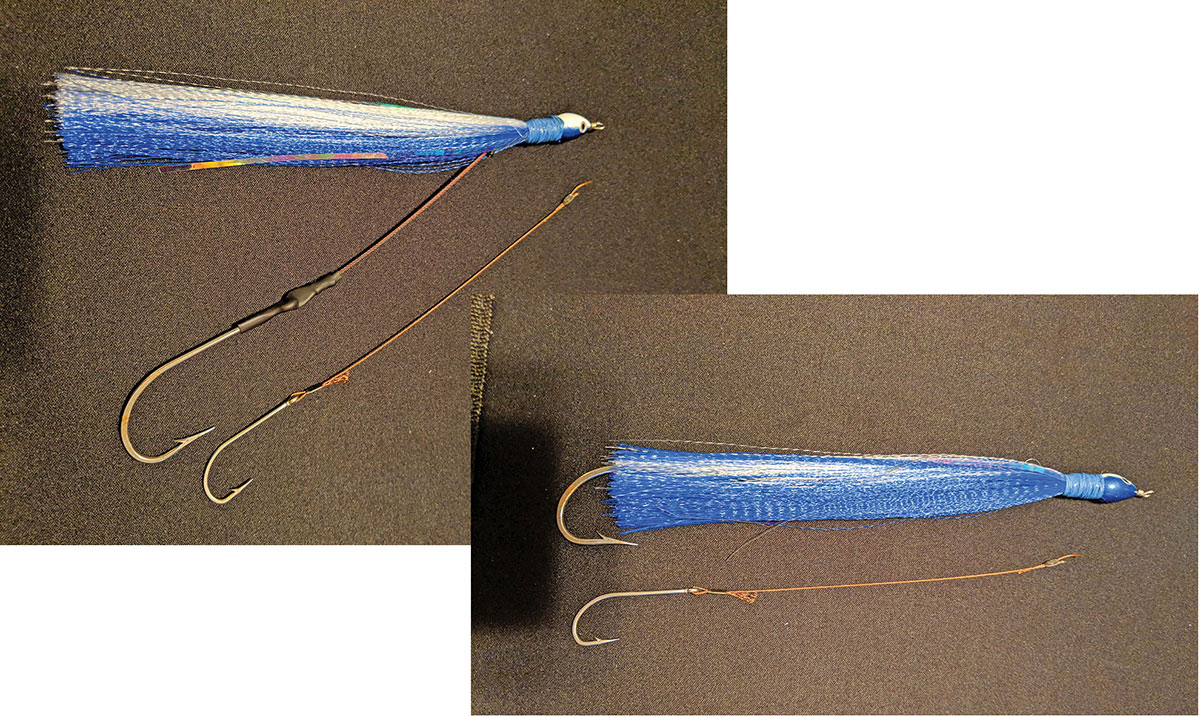
Finally, slide the heat shrink down over the hook eye and crimp, making sure it completely covers the crimp/tag end and the hook eye. Heat the tubing until it shrinks and becomes rigid. You may have to squeeze the tubing while warm to get it to tighten down to the hook shank and cable due to the size difference when compared to the hook eye and crimp. Be careful not to heat the ponytail hair because this will damage and melt synthetic hairs.
That’s it; the lure is ready to fish and these upgrades will extend the life of the ponytail, while putting more fish on deck!

